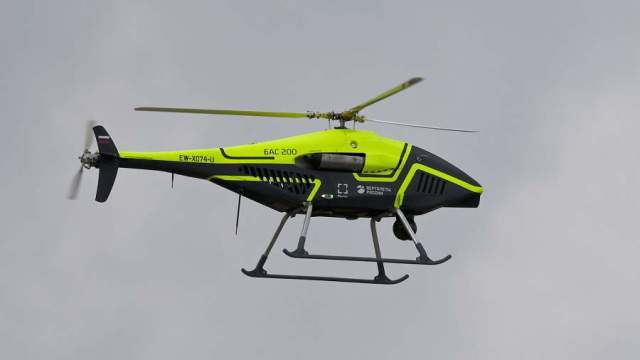The new drones are characterized by optimal speed for monitoring, as well as the ability to hover
MOSCOW, February 15. /tass/. Helicopter-type unmanned aerial vehicles (UAVs), such as the latest BAS-200, have a significantly higher power-to-weight ratio than multicopters, and unlike aircraft-type UAVs, the optimal speed for monitoring. This was reported to TASS by Alexey Mamotko, head of the marketing and sales department of the program "Unmanned helicopters" NCV "Miles and Kamov" of the Russian Helicopters holding.
"Our main advantage over multicopters is power-to-weight ratio. Electric motors have a flight time of a little more than 30 minutes, sometimes up to an hour, and the BAS-200 has four hours. The multicopter lifts up to 10 kg, we lift 50 kg, and thus we can perform the functions of a carrier for more productive mounted systems," he said.
According to him, unlike aircraft-type UAVs, the BAS-200, made according to the classical helicopter scheme, has an optimal flight speed for monitoring. "Manufacturers of attachments say that from 40 to 70 km/h is the optimal flight speed for the operation of optical systems. And it is at this flight speed that monitoring missions can be carried out most effectively," he noted.
Also, according to him, one of the advantages of the UAV BAS-200 is the ability to hang. "A unique function when performing monitoring work is when you can hang up and take a closer look at the source of the leak, the source of the fire, or just the situation around, depending on the tasks," Mamotko added.
The UAV BAS-200 produced by the Russian Helicopters holding is a helicopter-type complex with an external pilot. Its maximum speed is 160 km / h, commercial load is 50 kg, and the flight duration is four hours. It can be used to monitor the terrain in the dark and daylight, to detect objects and track them, as well as transmit video information in the visible and infrared ranges. For the first time, the BAS-200 was shown at the MAKS-2021 air show.

